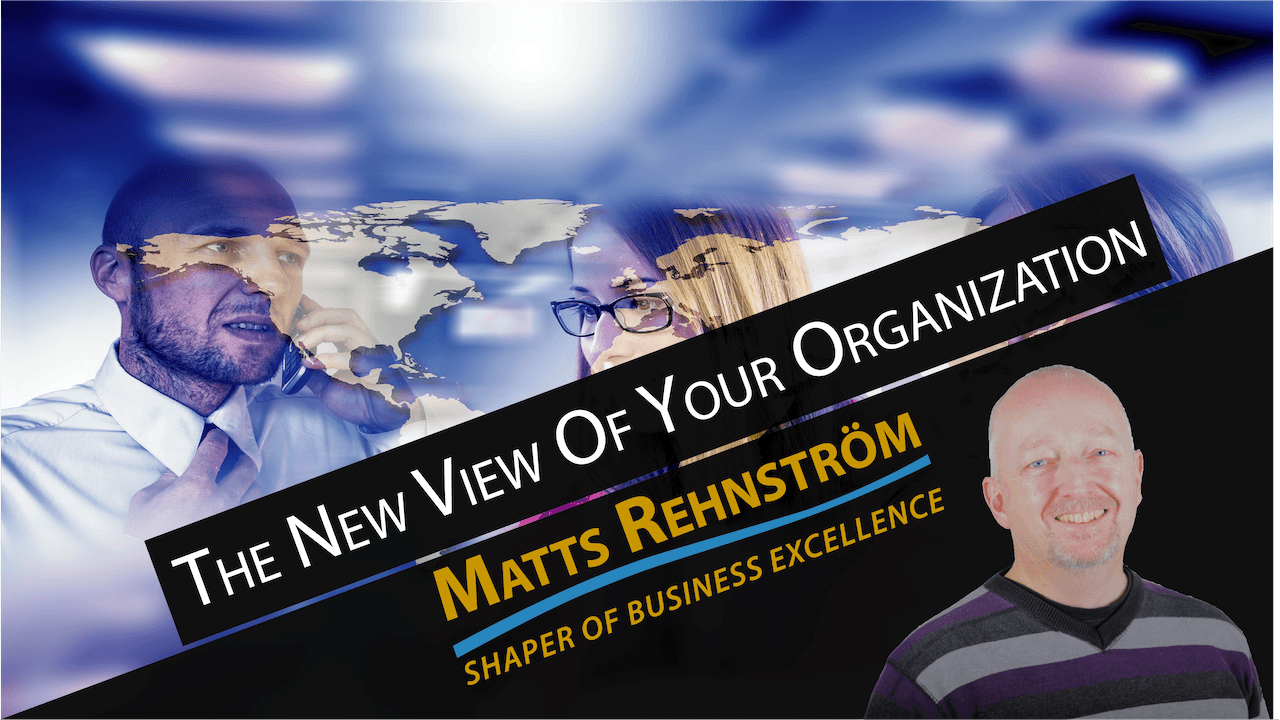Dark clouds form on horizon. They come closer in a speed usually not seen. This something that is not normal. People start to panicking and look around where to run and hide. The priest stands by the altar and look up into the sky that quickly fills with the clouds of bad omen. Thunder roles thru the air. Something is happening that people do not look forward to.
As the clouds forms in thick layers above the people a flash is seen that strikes into the altar and divides the big stone block in two parts and thousands of parts of debris flies through the air. The thunder is deafening, then it starts to rain and after a while it pours down. Some one is apparently very angry and someone else has most certainly done something, or not done something, that has triggered the anger shown.
The tricky thing with a line organization is that is has the heritage from an old time. A time where the mightiest of them all is on top, and even higher than that is God looking down on all the subordinates. And as all religions describe God, he is almighty and all-knowing. And as both kings and priests have told us, they are put in place by God, and have got some of that power, a power that few, or actually none, of the underlings have.
That power slowly trickles down in the organization, so those in the middle have part of the power, while those on the bottom seldom have any. The heritage has an impact on the today’s business, even though we have changed our view on religion, kings, and emperors and like. In many organizations we are still behaving with fear of punishment from those above us. We need to ask those above if we can do certain things.
I have experience where people need to ask their boss about minutia. Things that they should never ever considered asking anyone at all about if it was outside the organizations they are in. It makes me sad to see fully capable, well-educated, grown up people behaving as a child that asks here mother about if he or she could have a cookie.
Starting a couple of hundred years ago and continuing forward to just 30-40 years ago it was common that the boss was the one that had the most experience and most knowledge in the organization. The middle management was in between the top-tier and the bottom-tier, with more knowledge and experience than the bottom, but less than the big boss. As we turned over to the Information Society and then the Knowledge Society, that structure started to crumble. The pace increases and now it does not happen part by part, it is like what you could see on TV where they totally demolish a building with explosives.
Where we before had people that had no formal education at all, and could not read nor write, we now have people that has around 15 years of education. Few have less then twelve years, and many 15, and some even up to 18 years of education. They have spent years studying their area of expertise.
With the new well-educated coworker that has all information at their fingertips there is no need to be that old boss on top. To be a leader is to understand these changes and to understand that it is a role among others in an organization. The leader is not anymore per automatic the most educated, the most knowledgeable, and the most experienced.
Does your organization reflect this dramatic change in our world? How does you organization hand over the responsibilities AND authorities to people in the organization? Do the managers in the organization still attest purchases, travel expense reports, time sheets, allows someone to attend a training or conference, and such things, or is that distributed onto the different roles in the organization?
There are several successful organizations that have done that. They have stopped doing the dumb stuff and focus totally on delivering value to their customers. And they do it together as a team, not a hierarchy. What can you do to start that journey today?
To you and your business excellence,
Matts


